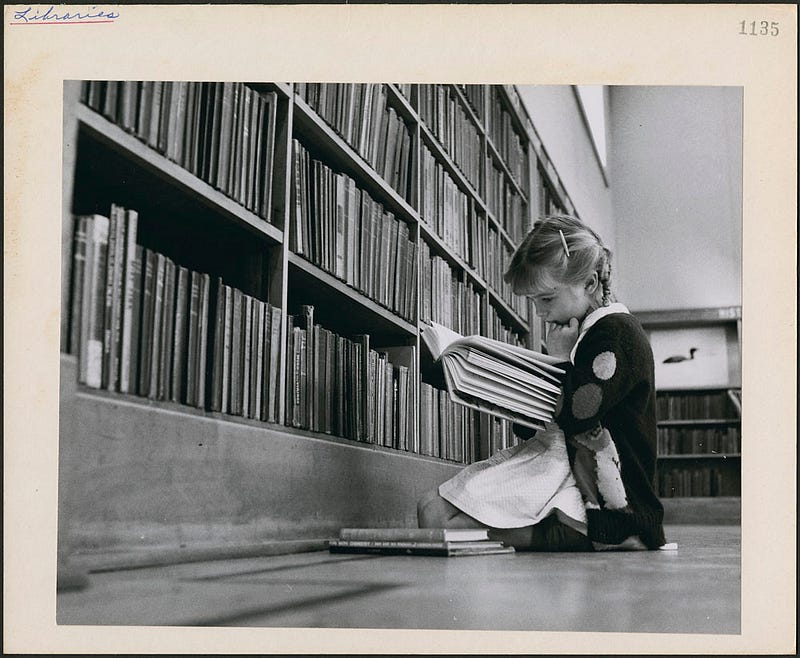Education, Anarchists, and Libraries
Free education spaces exist, and need to be protected.

In the early half of the 20th century, George Scott Williamson and Innes Pearse opened the Pioneer Health Centre in Britain. This institution was remarkable for two essential reasons.
Firstly, the Centre’s goal was the promotion of health in an individual through the improvement of the individual’s environment, which especially included the family. In fact, the family and the individual were considered an inseparable entity when considering physiological and psychological ills. This would prefigure the work of Dr. Murray Bowen some thirty years later, which would provide proof of the effects of an individual’s family system (Kerr & Bowen, 1988).
Secondly, the Centre focused on the creation of an environment of “non-interference,” the provision of “a rich environment in which the child would naturally develop the habit” of self-exploratory growth (Charkin, 2014, p. 417).
Free and spontaneous development (specifically for children at the Centre) was the name of the game: if the children could be given freedom to discover their own interests, they would not only work harder to master those interests, they would cultivate a larger self-discipline within their lives. The anarchist scholar Sir Herbert Read believed that this method contained the seeds for a “society of the future” (Charkin, 2014, p. 418).
This concept came at a high-water-mark for behaviorist educational models. These were ideas about learning couched in positive and negative reinforcement, ideas that deeply undervalued individual freedom as well as the effects of the environment on the learner (Booth, 2010, p. 38). For decades, theories about punishment and reward would dominate both the public imagination and actual educational systems throughout the world.
Now, by the 1930s and 40s, educational luminaries like John Dewey and Lev Vygotsky were already building a model of education far closer to what anarchism envisioned. Their approach is known as constructivism, and modern educational theory thankfully focuses more on this avenue. This has placed behaviorist methods somewhat on the back burner, though still by no means out of favor in many centers of education, let alone the public zeitgeist.
Constructivists focused on modes of education not obsessed with rote learning and reward/punishment schemes. However, they were not the only ones who believed that “individuals construct knowledge by building their own context for the information they encounter” (Booth, 2010, 39). Anarchist theorists as early as Kropotkin were aware that education “is not about changing ‘‘human nature’’ or installing an internal disciplinary regime in order to suppress, control or regulate” that nature, bur rather about nurturing beneficial qualities already present in human beings–such as our curiosity and drive toward mutual aid (Kennedy, 2017, p. 560).
So, what does all this have to do with libraries?
Libraries are “public places intended for learners, and for lives of self invention and pursuit. At their best, they are forums for communication, independent learning, and self preservation,” (Booth, 2010, p. 37). In many ways, the public library of modern America is a continuation of the unstructured learning environment envisioned by George Scott Williamson and Innes Pearse in the 1930s.
Sir Herbert Read believed that anarchist philosophical ideals required the earliest possible fertile ground in which to grow: ideals like critical thinking, self-discipline, self-awareness, curiosity, and social empathy were his core educational goals. Anarchism, therefore, is an education for individual and social freedom. Much of what Read admired about the Centre exists, today, in public libraries, one of the last functional spaces of public free learning — and the one I believe is most likely to adapt to the challenging times ahead.
Hi there! I’m Odin Halvorson, a librarian, independent scholar, film fanatic, fiction author, and tech enthusiast. If you like my work and want to support me, please consider subscribing!
References
Booth, Char. Reflective Teaching, Effective Learning : Instructional Literacy for Library Educators, American Library Association Editions, 2010. ProQuest Ebook Central, https://ebookcentral-proquest-com.libaccess.sjlibrary.org/lib/sjsu/detail.action?docID=675848.
Charkin, E. (2014). “Building the natural society of the future”: The Peckham Experiment (1943) as an anarchist account of childhood and education. Paedagogica Historica, 50(4), 414–432. https://doi.org/10.1080/00309230.2014.887124
Kerr, M. E., & Bowen, M. (1988). Family evaluation: An approach based on Bowen theory (1st ed). Norton.
